會議議程
學界專家演講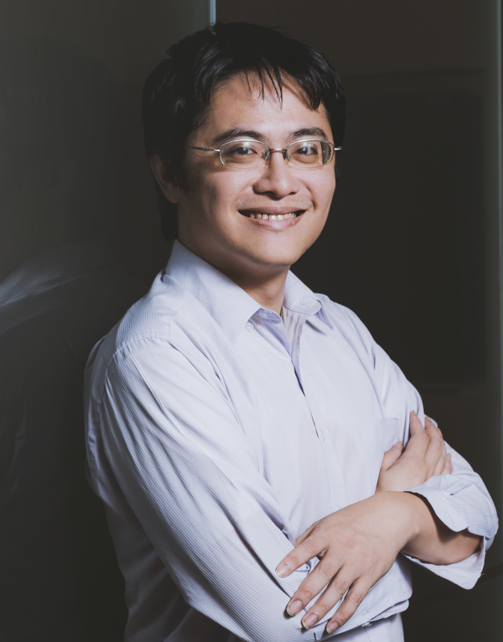 |
演 講 者:Hung-yi Lee (李宏毅) National Taiwan University, Taipei, Taiwan 演講主題:Generative Adversarial Network and its Applications to Natural Language and Speech Processing 演講時間:2020年1月14日 15:30~17:00(演講廳: 7F義大交誼廳) |
Abstract
Generative adversarial network (GAN) is a new idea for training models, in which a generator and a discriminator compete against each other to improve the generation quality. Recently, GAN has shown amazing results in image generation, but the applications of GAN on text and speech processing are still limited. In this talk, I will demonstrate the applications of GAN on voice conversion, unsupervised speech recognition, unsupervised abstractive summarization, and sentence generation.
Biography
李宏毅 (Hung-yi Lee) received the M.S. and Ph.D. degrees from National Taiwan University (NTU), Taipei, Taiwan, in 2010 and 2012, respectively. From September 2012 to August 2013, he was a postdoctoral fellow in Research Center for Information Technology Innovation, Academia Sinica. From September 2013 to July 2014, he was a visiting scientist at the Spoken Language Systems Group of MIT Computer Science and Artificial Intelligence Laboratory (CSAIL). He is currently an assistant professor of the Department of Electrical Engineering of National Taiwan University, with a joint appointment at the Department of Computer Science & Information Engineering of the university. His research focuses on machine learning (especially deep learning), spoken language understanding and speech recognition. He owns a YouTube channel teaching deep learning (in Mandarin) with more than 3.5M views and 44k subscribers.
Invited Talk I
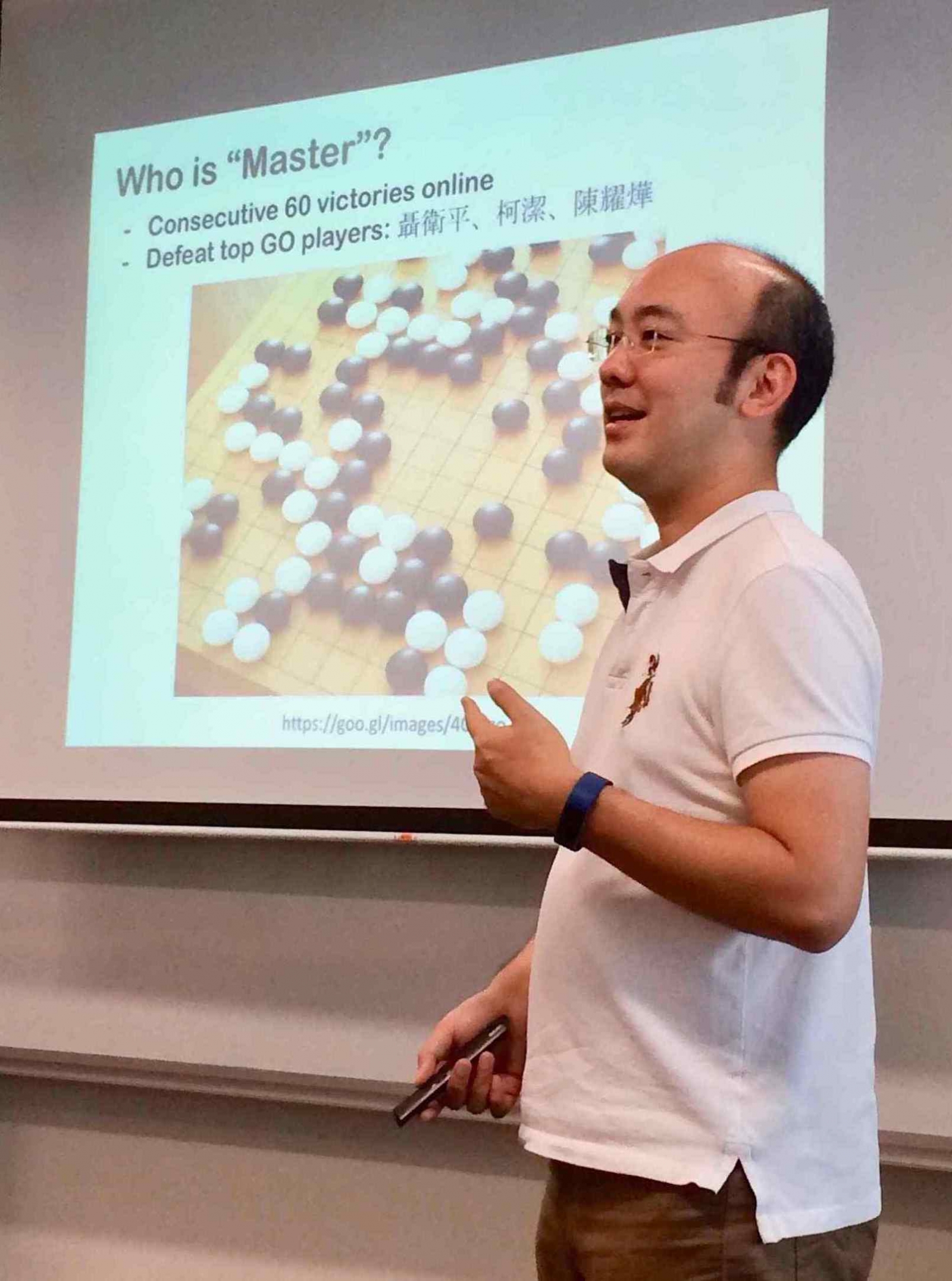 |
演 講 者:Prof. Che Lin (林澤) National Taiwan University, Taipei, Taiwan 演講主題:A Hybrid DQN and Qptimization Approach for Strategy and Resource Allocation in MEC 演講時間:2020年1月17日 10:30~11:20(演講廳: 7F義大演講廳) |
Abstract
To cope with the fast-growing data demand, mobile-edge computing (MEC) has emerged as a powerful supplement to the existing mobile network by providing computing service at the proximity of the resource-limited devices. However, in a multi-computing access point (CAP) and multi-user equipment (UE) MEC system, the size of the strategy space grows exponentially with the number of UEs and CAPs, and the resource allocation problem is non-convex. Although machine learning has served as a prominent tool, the lack of training samples and the time required for the training of the machine to converge are crucial issues to be addressed in practical implementation. We formulate the expected sum cost minimization problems that need to be solved at both CAP and UE ends. In addition to a pure DQN-based approach that solves both problems with DQNs, we also proposed two hybrid approaches that select the strategy profile with a DQN, and allocate resources via an optimization algorithm. We compare the performance of the three proposed approaches with other baseline methods. The simulation results showed that by introducing a hybrid optimization and QL approach, a large amount of training time is saved as the solution space is reduced significantly. Moreover, the performance of the hybrid approaches outperforms other baseline strategy selection algorithms and the pure-DQN approach. Although machine learning algorithms have shown encouraging results in solving complex problems in communications, our result demonstrates the possibility to unlock the potentials of both ML and optimization via a more efficient hybrid approach.
Biography
Che Lin received the B.S. degree in Electrical Engineering from National Taiwan University, Taipei, Taiwan, in 1999. He received the M.S. degree in Electrical and Computer Engineering in 2003, the M.S. degree in Math in 2008, and the Ph.D. degree in Electrical and Computer Engineering in 2008, all from the University of Illinois at Urbana-Champaign, IL. In 2008, he joined the Department of Electrical Engineering at National Tsing Hua University and has been an associate professor since August 2014. In 2019, He joined the Graduate Institute of Communication Engineering at National Taiwan University. Dr. Lin received a two-year Vodafone graduate fellowship in 2006, the E. A. Reid fellowship award in 2008, and holds a U.S. patent, which has been included in the 3GPP LTE standard. In 2012, he received the Excellent Teaching Award for the college of EECS, NTHU. He won the best paper award for 2014 GIW-ISCB-ASIA conference. In 2015, he received the CIEE outstanding young electrical engineer Award. In 2017, he received the Young Scholar Innovation Award from Foundation For The Advancement Of Outstanding Scholarship. He is a senior member of IEEE. His research interests include Deep Learning, Data Science, FinTech, Signal Processing in Wireless Communications, Optimization Theory, and Systems Biology.
Invited Talk II
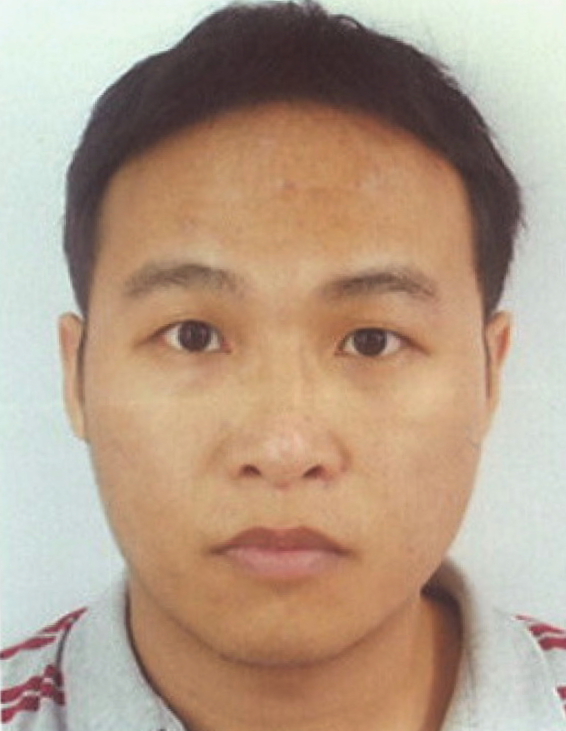 |
演 講 者:Prof. Ching-Yi Lai (賴青沂) 國立交通大學電信所 演講主題:Beyond Quantum Supremacy: Large-scale Fault-tolerant Quantum Computation 演講時間:2020年1月17日 11:20~12:10(演講廳: 7F義演講廳) |
Abstract
A quantum computer is a device that exploits the effects of quantum mechanics, such as entanglement and superposition, to do computation. Quantum computation promises computing power beyond the capability of today's computers.
This talk begins with a quick introduction to quantum computation and quantum information. Then I will explain recent demonstration of quantum supremacy by Google's research group. To realize a large-scale quantum computer in the future, techniques of quantum error correction and fault-tolerant quantum computation (FTQC) must be applied to protect the coherence of quantum states during imperfect computation. Quantum LDPC codes are considered as a strong candidate for future FTQC schemes. I will present our recently developed belief propagation decoding algorithms for sparse quantum codes, including one decoder inspired by neural network.
Biography
Ching-Yi Lai was born in Taipei, Taiwan. He received his MS in 2006 and BS in 2004 in electrical engineering from National Tsing Hua University, Hsinchu, Taiwan. He received his PhD in 2013 in electrical engineering from University of Southern California, Los Angeles, California. Currently he is an Assistant Professor at the Institute of Communications Engineering, National Chiao Tung University, Hsinchu, Taiwan. Previously he was a postdoctoral research associate at the Centre for Quantum Software and Information, University of Technology Sydney from December 2013 to July 2015. Then he was a postdoctoral scholar at the Institute of Information Science, Academia Sinica, Taiwan from September 2015 to July 2018. Prof. Lai received the MOST Young Scholar Fellowship in 2018 from the Ministry of Science and Technology, Taiwan. His research interests include theory of error-correcting codes, information theory, quantum computation and information, fault-tolerant quantum computation, and quantum cryptography.
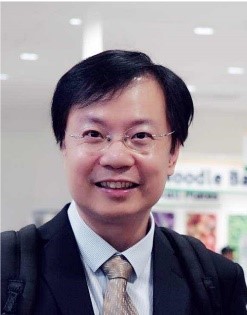 |
演 講 者:郭景明 特聘教授 臺灣科技大學電機工程學系 演講主題:Digital Halftone Classification using Stochastic Statistics and Convolutional Neural Networks 演講時間:2020年1月15日 09:00~09:30(7F義大演講廳) 計畫類型:優秀年輕學者研究計畫 計畫名稱:新世代數位半色調技術之精進及其於跨領域延伸探討 計畫編號:105-2628-E-011-002-MY3 |
Abstract
Digital halftone technique is widely utilized in various printing applications and is used in newspapers, magazines, journals and documents productions. The method involves converting the gray scale or color images into its appropriate binary pattern that can result in best printing quality. Moreover, the halftone classification is a fundamental requirement for the optimal reconstruction of binary printed images during inverse halftoning and image authentication. In this study, a new classification scheme based on stochastic halftone statistics and convolutional neural networks (CCN) is proposed. For effective training, a new approach exploiting the parameters of stochastic halftone corresponding to the pattern homogeneity and alignment is considered. The CNN network has been optimized to perform classification with minimal layers, and the architecture is optimized using cross entropy, and make use of soft-max classification layer. During testing, the sub-halftone patches are classified individually and then majority voting strategy is performed to identify the actual halftone class. For performance evaluation, a deep learning halftone database has been developed for the 24 halftone varieties which also includes the latest multitone images. The database comprises of 3500 sample images for each halftone class and totally comprises of 85000 images. From experimental result, it has been validated that the proposed architecture achieves perfect accurate classification rate (ACCR) of 100% for several halftone class, and showed superior performance in comparison with state-of-the-art methods.
Biography
郭景明 Jing-Ming Guo
臺灣科技大學 電機工程學系 特聘教授
臺灣科技大學 前瞻智能影像暨視覺技術研究中心 中心主任
國際工程與科技學會中華民國分會 理事長
郭教授曾任國立台灣科技大學電機系理事長兼電機資訊學院副院長及研發處創新育成中心主任,現為前瞻智能影像暨視覺技術研究中心主任。郭教授於2015年擔任美國Columbia University的訪問學者,也曾於2002年6月至2003年5月及2014年6月至11月擔任美國University of California, Santa Barbara訪問學者。郭教授的研究領域包含人工智慧、電腦視學、機器(深度)學習及生物資訊辨識。
郭教授目前為IEEE資深會員(Senior Member)也是IET會士(Fellow),於2012年獲升台灣科技大學特聘教授。郭教授於2017及2016分別獲得中華民國系統學會頒發「學術傑出貢獻獎」及中國電機工程師學會頒發「傑出電機工程教授獎」;2015年獲得台灣科技大學研究與創作傑出獎; 2013年獲得科技部產學合作傑出獎;於2011年分別獲得中國電機工程學會優秀青年學者獎及中華民國系統學會優秀青年學者獎,其餘獎項於下面延伸資料介紹。
郭教授於2017年擔任International Workshop on Advanced Image Technology大會主席;2015及2016年擔任國際研討會IEEE International Conference on Consumer Electronics in Taiwan大會主席;於2012、2013及2014年分別擔任國際研討會IEEE International Symposium on Intelligent Signal Processing and Communication Systems、IEEE International Symposium on Consumer Electronics及IEEE International Conference on Consumer Electronics in Taiwan大會議程主席。郭理事長曾為國際期刊(IEEE Transactions on Multimedia)最佳論文審查委員會委員; 於2012及2013年擔任IEEE Signal Processing Society summer school講師。郭教授為現任中華民國影像處理與圖形識別學會理事及國際工程與科技學會台灣台北分會理事長,其目前為六個頂尖國際SCI期刊Associate Editor ,分別為IEEE Transactions on Image Processing, IEEE Transactions on Multimedia, IEEE Signal Processing Letters, the Information Sciences, the Signal Processing及Journal of Information Science and Engineering。
Invited Talk II
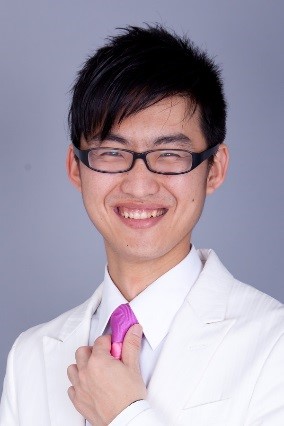 |
演 講 者:鄭欣明 教授 國立臺灣科技大學資訊工程系 演講主題:實作5G無線電存取網路虛擬化之實驗平台 演講時間:2020年1月15日 09:30~10:00(7F義大演講廳) 計畫類型:優秀年輕學者研究計畫 計畫名稱:實作5G無線電存取網路虛擬化之實驗平台 計畫編號:105-2628-E-011-001-MY3 |
演講摘要
為了滿足、超低延遲與大量設備的服務品質需求,針對不同使用情境的彈性且客製化的網路架構在5G中會提供。在無線電存取網路端, 將基礎建設與無線電資源的抽象化與共享化可實現服務的切片、資源的切片,即一個基地台(稱為gNB)的功能會被切割存放在集中元件 ( CU ) 與分散元件 (DU )中,以滿足各種使用情境與配置。我們針對gNB的虛擬化部分, 利用USRP硬體, OpenAirInterface,並且導入開源容器技術Docker,實作可攜、低價且節能的5G無線電存取網路虛擬化實驗平台。此低價的實驗平台可供學術界驗證5G電信網路中無線電存取網路上所設計的機制與開發的理論模型。整體規劃不僅將深入探討滿足5G行動通訊技術所需的關鍵特性,並在此實驗平台上試驗各種可能的解法與可行性,計畫結果將預期可進而推動5G產業在虛擬化的相關技術研究與發展。
Biography
Prof. Shin-Ming Cheng received his B.S. and Ph.D. degrees in computer science and information engineering from National Taiwan University, Taipei, Taiwan, in 2000 and 2007, respectively. He was a Post-Doctoral Research Fellow at the Graduate Institute of Communication Engineering, National Taiwan University, from 2007 to 2012. Since 2012, he has been on the faculty of the Department of Computer Science and Information Engineering, National Taiwan University of Science and Technology, Taipei, where he is currently an associate professor. Since 2017, he has been with the Research Center for Information Technology Innovation, Academia Sinica, Taipei, as a joint assistant research fellow.
His current interests are mobile networks and cyber security. He received 2014 K. T. Li Young Researcher Award from ACM Taipei/Taiwan Chap ter, IEEE PIMRC 2013 Best Paper Award, and 2013 Young Scholar Award from National Taiwan University of Science and Technology.
Invited Talk III
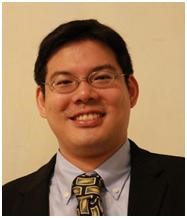 |
演 講 者:魏宏宇 教授 國立臺灣大學電機工程學系/所 演講主題:免執照LTE系統之賽局理論架構 演講時間:2020年1月15日 10:00~10:30(7F義大演講廳) 計畫類型:吳大猷先生紀念獎計畫 計畫名稱:免執照LTE系統之賽局理論架構 計畫編號:105-2221-E-002-014-MY3 |
Abstract
Wireless cellular technologies aim to use unlicensed bands for additional spectrum resources. Licensed-assisted access (LAA) to unlicensed spectrum brings hope for the service provider (SP) to mitigate the deficiency of radio resources. We apply game theory to design a pricing model in a licensed and unlicensed coexisting network. A two-sided market model with content providers (CPs) and end users (EUs) is investigated. A premium content delivery deal is further designed via the optimal auction in order to efficiently allocate the scarce radio resources for the CPs with higher traffic load and QoS requirement. Thus, the SP and CPs form a prioritized spectrum game, and the SP and EUs form a radio access subscription game. Analysis shows that all players benefit from the premium delivery deal and co-existence of unlicensed LTE.
Biography
Hung-Yu Wei is a Professor and Associate Department Chair in Department of Electrical Engineering, National Taiwan University. He received the B.S. degree in electrical engineering from National Taiwan University in 1999. He received the M.S. and the Ph.D. degree in electrical engineering from Columbia University in 2001 and 2005 respectively. He joined Department of Electrical Engineering at the National Taiwan University in July 2005. He received NTU Excellent Teaching Award (台大教學優良獎) in 2008 and 2018. He also received "Recruiting Outstanding Young Scholar Award" from the Foundation for the Advancement of Outstanding Scholarship (傑出人才發展基金會"積極爭取國外優秀青年學者獎助") in 2006, K. T. Li Young Researcher Award (李國鼎青年研究獎) from ACM Taipei/Taiwan Chapter and The Institute of Information and Computing Machinery in 2012, Ministry of Science and Technology Research Project for Excellent Young Scholars (科技部優秀年輕學者計畫) in 2014, Excellent Young Engineer Award from the Chinese Institute of Electrical Engineering (中國電機工程學會優秀青年電機工程師獎) in 2014, and Wu Ta You Memorial Award from MOST(吳大猷先生紀念獎) in 2015. He served as a division director in NTU Computer and Information Networking Center during 2016-2017.He has been actively participating in NGMN, IEEE 802.16, 3GPP, IEEE P1934/P1935 standardization, and was a voting member of the IEEE 802.16 working group. He serves as Chair of IEEE P1935 Working Group to standardize fog/edge computing management and orchestration.
Invited Talk IV
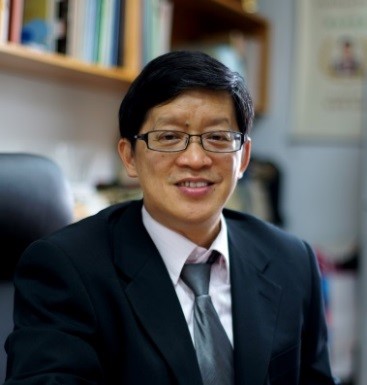 |
演 講 者:楊家輝 教授 國立成功大學電腦與通信工程研究所 演講主題:視覺搜尋計算於智慧生活應用之整合設計研究(Integrated Research of Visual Search Computation Techniques for Smart Living Applications) 演講時間:2020年1月15日 11:00~11:30(7F義大演講廳) 計畫類型:整合型研究計畫 計畫名稱:總計畫:視覺搜尋計算於智慧生活應用之整合設計研究(Integrated Research of Visual Search Computation Techniques for Smart Living Applications) 計畫編號:105-2221-E-006-065-MY3 |
演講摘要
本總計畫「視覺搜尋計算於智慧生活應用之整合設計研究」以研究、改良、及實現視覺搜尋技術為重點,其研究包含:1) 智慧立體視覺之特徵擷取與強健辨識應用與實現; 2)人本視角影片中的場景分析與物件辨識; 3) 基於多模態手勢辨識之擴增實境智慧互動設計三大項目,研究辨識與分析演算法,開發智慧視訊與雲端結合之智慧生活應用雛型系統為目標,總計畫以智慧購物、智慧校園、與智慧城市生活雛型系統為應用目標。
本總計畫將結合虛擬實境功能之智慧生活3D智慧影像應用與廣播,進而推廣至更多種類行動裝置上的生活應用。發展特徵域人臉及物件辨識、3D立體視覺計算,研究視覺分析及事件辨識及視覺搜尋及景物分析,結合影像及Myo互動感測與影像及AR及VR視覺介面互動感測,以達到達到有更多娛樂、軍事、商業、醫療運動應用於智慧顯示。本總計畫開發適逢人工智慧的大爆發年代,以自駕車系統為例,本總計畫亦跟隨從機器學習(Machine Learning)調整轉化深度學習(Deep Learning)架構亦將加以介紹。
Biography
演講人現為成功大學電機系特聘教授,專攻於多媒體訊號處理、壓縮,及辨識技術及其應用研究,學術與產學成就獲得國內外學術界認可。申請人於2007年獲選為IEEE會士(Fellow),並於2004-2006年間擔任IEEE CAS傑出講座 (Distinguished Lecturer)及2006 -2011年間擔任IEEE多媒體系統應用技術委員會主席,2007年指導獲得IEEE CAS最佳青年論文獎及國內外各項獎項及最佳論文獎,並擔任多媒體相關的國際期刊編輯及技術委員會,並多次獲邀擔任國際研討會技術委員主席及專題演講(Keynote Speech)。過去研究成果已發表142 篇期刊論文,222篇會議論文,及獲得國內外專利54項。期刊論文中61篇為IEEE 期刊論文及66篇IET/IEE 高質量期刊論文。國內亦獲2007年國科會傑出研究獎及2010年中國電機工程學會之傑出電機工程教授獎。演講人亦有產業服務實績於2011年及2014年分獲國立成功大學產學合作成果特優獎及優良獎。申請人於2016-2019年兼成功大學雲端媒體服務整合中心主任,以及電機、資訊科技與人文研發中心主任。並於2017-2019年獲聘行政院科技會報辦公室 科技計畫首席評議專家。演講人近年來專注「立體(3D)影視處理技術」與「智慧視覺辨識應用技術」兩個研究主題。申請人於立體(3D)影視處理技術中發展立體影像傳輸所需之壓縮及處理技術,並以參加國際標準MPEG及AVS會議,爭取發展之技術成為國際標準,希望為台灣3D多媒體視訊產業尋求創新突破。
Invited Talk V
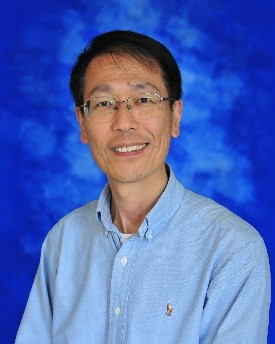 |
演 講 者:李端興 教授 國立清華大學資訊工程學系 演講主題:網路鏈結資料之硏究 演講時間:2020年1月15日 11:30~12:00(7F義大演講廳) 計畫類型:整合型研究計畫 計畫名稱:總計畫:網路鏈結資料之硏究 計畫編號:105-2221-E-007-036-MY3 |
Abstract
A Generalized Configuration Model with Degree Correlations and Its Percolation Analysis. In this talk we present a generalization of the classical configuration model. Like the classical configuration model, the generalized configuration model allows users to specify an arbitrary degree distribution. In our generalized configuration model, we partition the stubs in the configuration model into $b$ blocks of equal sizes and choose a permutation function $h$ for these blocks.
In each block, we randomly designate a number proportional to q of stubs as type 1 stubs, where q is a parameter in the range [0, 1]. Other stubs are designated as type 2 stubs. To construct a network, randomly select an unconnected stub. Suppose that this stub is in block i. If it is a type 1 stub, connect this stub to a randomly selected unconnected type 1 stub in block h(i). If it is a type 2 stub, connect it to a randomly selected unconnected type 2 stub. We repeat this process until all stubs are connected. Under an assumption, we derive a closed form for the joint degree distribution of two random neighboring vertices in the constructed graph. Based on this joint degree distribution, we show that the Pearson degree correlation function is linear in q for any fixed b. By properly choosing h, we show that our construction algorithm can create assortative networks as well as disassortative networks. We present a percolation analysis of this model. We verify our results by extensive computer simulations.
Biography
Duan-Shin Lee (S’89-M’90-SM’98) received the B.S. degree from National Tsing Hua University, Taiwan, in 1983, and the MS and Ph.D. degrees from Columbia University, New York, in 1987 and 1990, all in electrical engineering. He worked as a research staff member at the C&C Research Laboratory of NEC USA, Inc. in Princeton, New Jersey from 1990 to 1998. He joined the Department of Computer Science of National Tsing Hua University in Hsinchu, Taiwan, in 1998. Since August 2003, he has been a professor. He received a best paper award from the Y.Z. Hsu Foundation in 2006. He served as an editor for the Journal of Information Science and Engineering between 2013 and 2015. He is currently an editor for Performance Evaluation. Dr. Lee's current research interests are network science, game theory, machine learning and high-speed networks. He is a senior IEEE member.
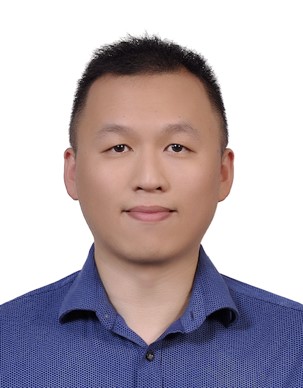 |
演 講 者:Yu-Hsiang Cheng (鄭宇翔) 國立台灣大學電機工程學系 演講主題:Terahertz applications and spectroscopy 演講時間:2020年1月16日 09:10-10:00 (6F演講廳) |
Abstract
In this talk, I will first briefly review the terahertz technology and talk about potential applications including imaging, sensing and, communication. Then, I will focus on the generation and detection of terahertz electromagnetic waves using ultrafast lasers. Lastly, I will show our study of terahertz time-domain spectroscopy either in free space or in a slab waveguide.
Biography
Yu-Hsiang Cheng received the double B.S. degrees in Electrical Engineering and Physics from National Taiwan University in 2011. He received the M.S. degree in Photonics and Optoelectronics from National Taiwan University in 2013. He received the Ph.D. degree in Electrical Engineering and Computer Science from Massachusetts Institute Technology in 2019. In 2019, he joined Department of Electrical Engineering and Graduate Institute of Communication Engineering at National Taiwan University. He is interested in all sorts of terahertz technology and applications.
大會邀約演講
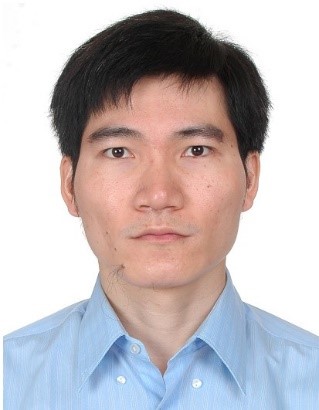 |
演 講 者:Yi-Hsin Pang (龐一心) 國立高雄大學 電機工程學系 演講主題:互動式電磁動畫學習平台-介紹與更新 演講時間:2020年1月17日 10:30-10:50 (6F演講廳) |
Abstract
電磁學是非常重要的一門學問,對於大部分電機系的學生來說也是比較抽象且不易學習的學科,因而學習興趣下降,導致攻讀電波領域的學生日漸減少。為了提升學生對電磁學的興趣,2012年由台灣幾所大專院校共同執行一個教育部的電磁學教學改進計畫,暱稱為S.A.V.E. (simplicity,accessibility,visualization,edutainment),在國家高速網路與計算中心和資策會協助下共同創造一個電磁學線上學習平台(http://em.emedu.org.tw/),其中開發了超過40個線上互動式學習模組,內容涵蓋大部分基礎電磁學的教學內容,例如平面波、傳輸線、和天線,甚至包含了設計微波放大器的教學模組。
本次演講將對電磁學線上學習平台做個簡介,同時介紹最近這兩年在IEEE MTT-S Education Committee和台大深耕計畫支持下,我們新增的一些線上互動式學習模組,包含正交座標系統、矩形波導與共振腔、和T/-型集總元件匹配網路設計等。希望透過這次的交流,提升電磁學線上學習平台的使用率,並且獲得各界的回饋來持續改善此教學平台。
Biography
Yi-Hsin Pang received the B.S., M.S., and Ph.D. degrees in electrical engineering from National Taiwan University, Taipei, Taiwan in 1994, 1996, and 2003, respectively. From January 2004 to July 2008, he had worked as a design engineer in the SoC Technology Center of Industrial Technology Research Institute, Hsinchu, Taiwan. Since August 2008, he joined the faculty of the Department of Electrical Engineering, National University of Kaohsiung, where he is currently an Associate Professor. His current research interest include microwave power dividers, couplers, and balanced microwave circuits. He is also currently working on developing web-based interactive learning modules for electromagnetics.
Invited Talk VI
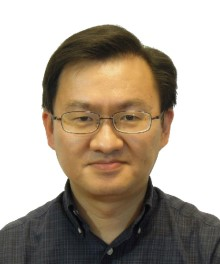 |
演 講 者:Prof. Yo-Shen Lin (林祐生) 國立中央大學電機系 演講主題:可程式微波被動元件 演講時間:2020年1月16日10:30~11:00(6F演講廳) 計畫類型:優秀年輕學者研究計畫 計畫名稱:可程式微波被動元件 計畫編號:105-2628-E-008-001-MY3 |
Abstract
In view of the potential of reconfigurable microwave components for applications in the next-generation software-defined radio, this three-year research project focuses on the development of novel programmable microwave passive components. The proposed programmable microwave passive devices utilize bridged-T coils and RF switch matrix as building blocks. Comparing to other reconfigurable microwave circuit designs, the proposed ones can achieve much more functions in more compact circuit sizes.
Biography
Yo-Shen Lin received the B.S. and M.S. degrees in electrical engineering, and Ph.D. degree in communication engineering from the National Taiwan University, Taipei, Taiwan, R.O.C., in 1996, 1998, and 2003, respectively.
From 1998 to 2001, he was an RF engineer with Acer Communication and Multimedia Inc., Taipei, designing GSM mobile phones. From 2001 to 2003, he was with Chi-Mei Communication System Inc., Taipei, where he was involved with the design of LTCC RF transceiver module for GSM mobile applications. In August 2003, he joined the Graduate Institute of Communication Engineering, National Taiwan University, as a Postdoctoral Research Fellow, and became an Assistant Professor in August 2004. Since August 2005, he has been with the Department of Electrical Engineering, National Central University, Taoyuan, Taiwan, R.O.C., where he is currently a Professor. He was a Guest Researcher with the Ferdinand-Braun-Institut, Leibniz-Institut für Höchstfrequenztechnik, Berlin, Germany from Sept. to Nov. 2008, and a Visiting Scholar with the Department of Electrical and Computer Engineering, University of California at San Diego, La Jolla, CA, USA, from Aug. 2014 to Aug. 2015. His research interests include the design and analysis of miniature microwave passive circuits and RF transceiver modules for wireless communication systems.
Dr. Lin was the recipient of the Best Paper Award of the 2001 Asia-Pacific Microwave Conference (APMC), Taipei, Taiwan, R.O.C., the URSI Young Scientist Award presented at the 2005 URSI General Assembly, New Delhi, India, the URSI EMT-S Young Scientist Award presented at the 2007 URSI International Electromagnetic Symposium (EMT-S), Ottawa, Canada, and the Best Symposium Paper Award of the 2015 Asia-Pacific International Symposium on Electromagnetic Compatibility (APEMC), Taipei, Taiwan, R.O.C.
Invited Talk VII
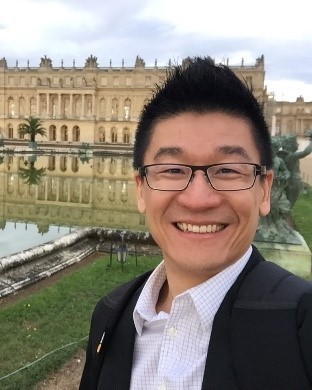 |
演 講 者:Prof. Shih-Yuan Chen (陳士元) 國立台灣大學電信工程學研究所 演講主題:新式三維近場微波成像技術之開發與分析 演講時間:2020年1月16日16:30~17:00(6F演講廳) |
Abstract
在這次的成果報告中,我將先介紹本計畫所開發適用於單一探針天線架設(僅需反射係數)之三維微波全像術成像演算法,不僅可補償探針天線本身非理想的發射與接收特性,為了對低損耗或無損之材質進行成像,本計畫所提出之成像方法進一步引入了輔助方程式以大幅提升其數值穩定性,搭配所提出的相位補償方法,吾人所提出之成像演算法可以達到目前同類型演算法所達不到的縱向解析度(約為十分之一波長),其效能也已透過模擬與量測之成像結果驗證。為了進一步提升成像品質,我們接著提出了增強型相位補償法,可依不同入射角的平面波分量分別補償其傳播相位,同時將散射物的存在對其後方空間之平面波傳播相位之影響納入考慮,可改善因只使用單一探針量測時散射物所造成的遮蔽效應。其效用也經由一系列模擬之成像結果驗證。使用增強型相位補償法不會對所提出之成像演算法的後處理計算造成額外的負擔,卻可有效改善成像的品質。本計畫所開發之成像演算法將可應用於非侵入式物體偵測、工業檢測、生醫檢測等。
Biography
Shih-Yuan Chen received the B.S. degree in electrical engineering in 2000, and the M.S. and Ph.D. degrees in communication engineering in 2002 and 2005, respectively, all from the National Taiwan University, Taipei, Taiwan.
From 2005-2006, Dr. Chen has been a post doctorate research fellow with the Graduate Institute of Communication Engineering, National Taiwan University, working on the 60-GHz switched-beam circularly-polarized antenna module. Since July 2006, he joined the faculty of the Department of Electrical Engineering and Graduate Institute of Communication Engineering, National Taiwan University, where he is currently a professor. From August 2008-July 2009, Dr. Chen has visited the Department of Electrical and Computer Engineering at the Michigan State University, East Lansing, MI, USA. His current research interests include the design and analysis of microstrip antennas/arrays, reflectarrays, RF energy harvesting, metamaterial and composite right-/left-handed transmission lines, self-structuring microwave devices, and microwave imaging.
Dr. Chen received the NTU Excellent Teaching Awards in 2009, 2010, 2012, 2013, 2014, and 2015. He also received the 2012 International Symposium on Antennas and Propagation Young Scientist Travel Grant, the 2013/2014 Top 10 Reviewers of IEEE Transactions on Antennas and Propagation, and the Ministry of Science and Technology Research Projects for Excellent Young Scholars in 2012, 2015, and 2017. He serves as an Associate Editor for IEEE Antennas and Wireless Propagation Letters and Editorial Board Member for International Journal of Antennas and Propagation. He was the Vice-Chair and is currently the Chairperson of IEEE AP-S Taipei Chapter, and is a member of the Education Committee of IEEE AP society. Dr. Chen is a Senior Member of the IEEE, a Member of IET, and a member of Commission B of URSI.





